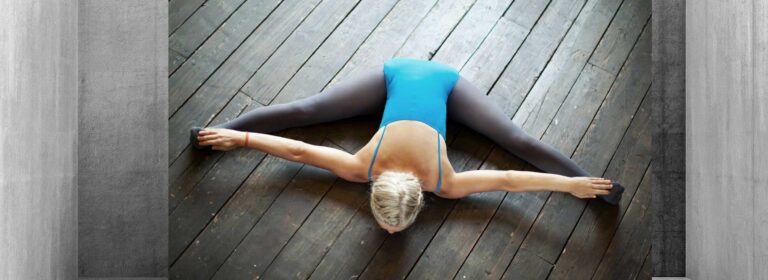Yoga Practice Name
Upavistha Konasana (उपविष्ठ कोणासन)


Upavistha Konasana (उपविष्ठ कोणासन)
Seated Wide Angle Pose
Upavistha Konasana is a seated forward bend performed with the legs spread wide apart. It stretches the inner thighs, hamstrings, and spine, and helps calm the mind. This pose improves flexibility in the lower body and is often practiced to prepare for deeper forward bends or seated meditations.
Cautions and Limitations:
1. Baddha Konasana (Bound Angle Pose) – Opens the hips and inner thighs, preparing the pelvis and groin for deep forward bends.
2. Paschimottanasana (Seated Forward Bend) – Enhances hamstring flexibility and spinal length, helping deepen Upavistha Konasana gradually.
3. Janu Sirsasana (Head-to-Knee Forward Bend) – Offers a one-legged variation that improves hamstring flexibility and spinal elongation on each side.
4. Supta Padangusthasana (Reclining Hand-to-Big-Toe Pose) – A supine posture that safely stretches hamstrings and inner thighs without compressing the spine.
5. Trikonasana (Triangle Pose) – Builds strength and openness in the legs, hips, and spine, all essential components of Upavistha Konasana.
6. Malasana (Garland Pose) – Deeply opens the hips and groin, encouraging better pelvic tilt and release in seated wide-leg positions.
7. Parighasana (Gate Pose) – Stretches the side body and hamstrings while encouraging lateral extension and core engagement.
8. Adho Mukha Svanasana (Downward-Facing Dog) – Warms up the hamstrings and spine, promoting blood flow and overall readiness for deeper seated stretches.
9. Ananda Balasana (Happy Baby Pose) – Releases the lower back and hips in a reclined position, making the pelvis more mobile for seated poses.
10. Savasana (Corpse Pose) – Always helpful as a closing practice to integrate the physical and mental effects of Upavistha Konasana.
1. Paschimottanasana, 2. Baddha Konasana, 3. Janu Sirsasana, 4. Prasarita Padottanasana, 5. Supta Konasana